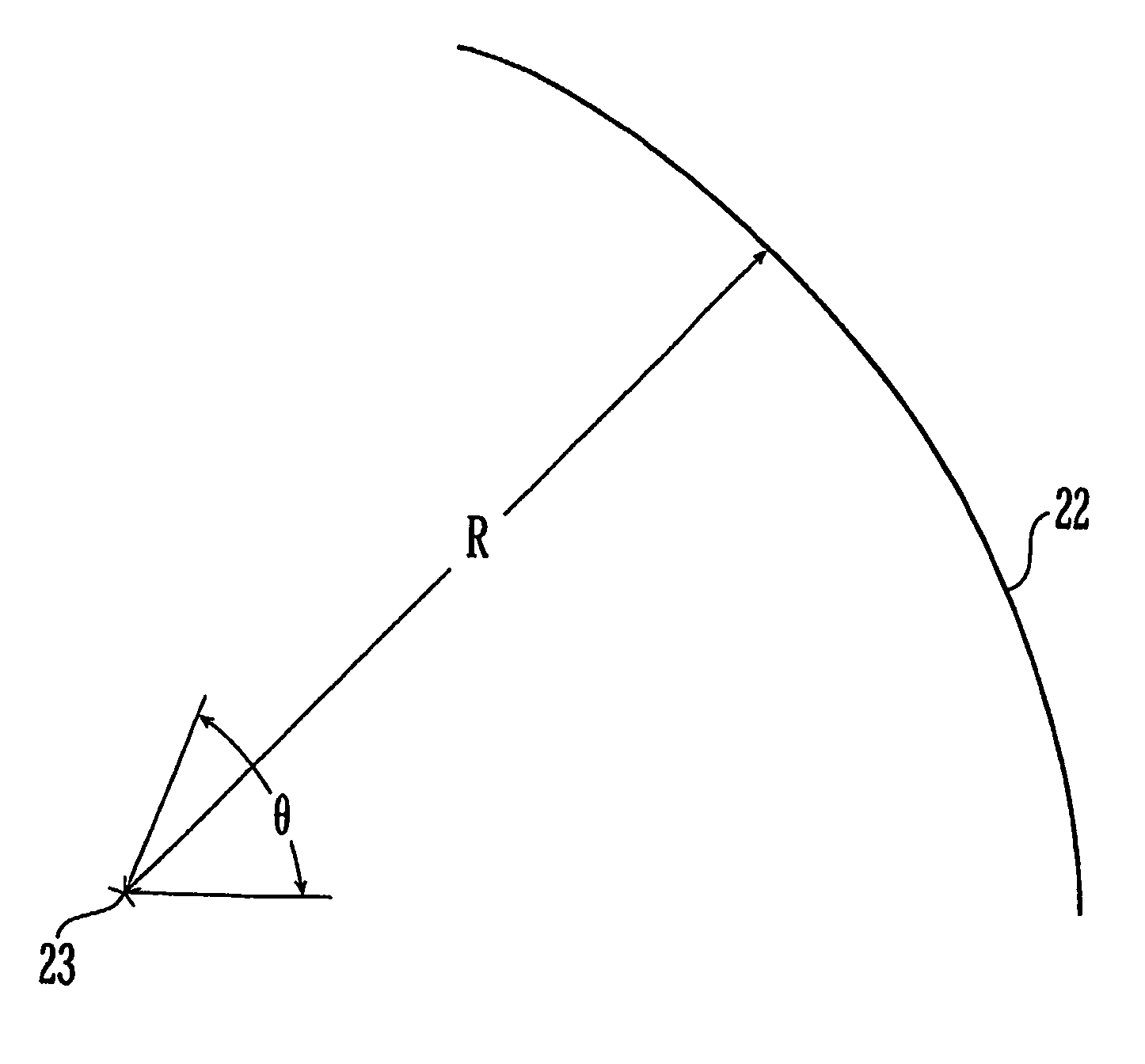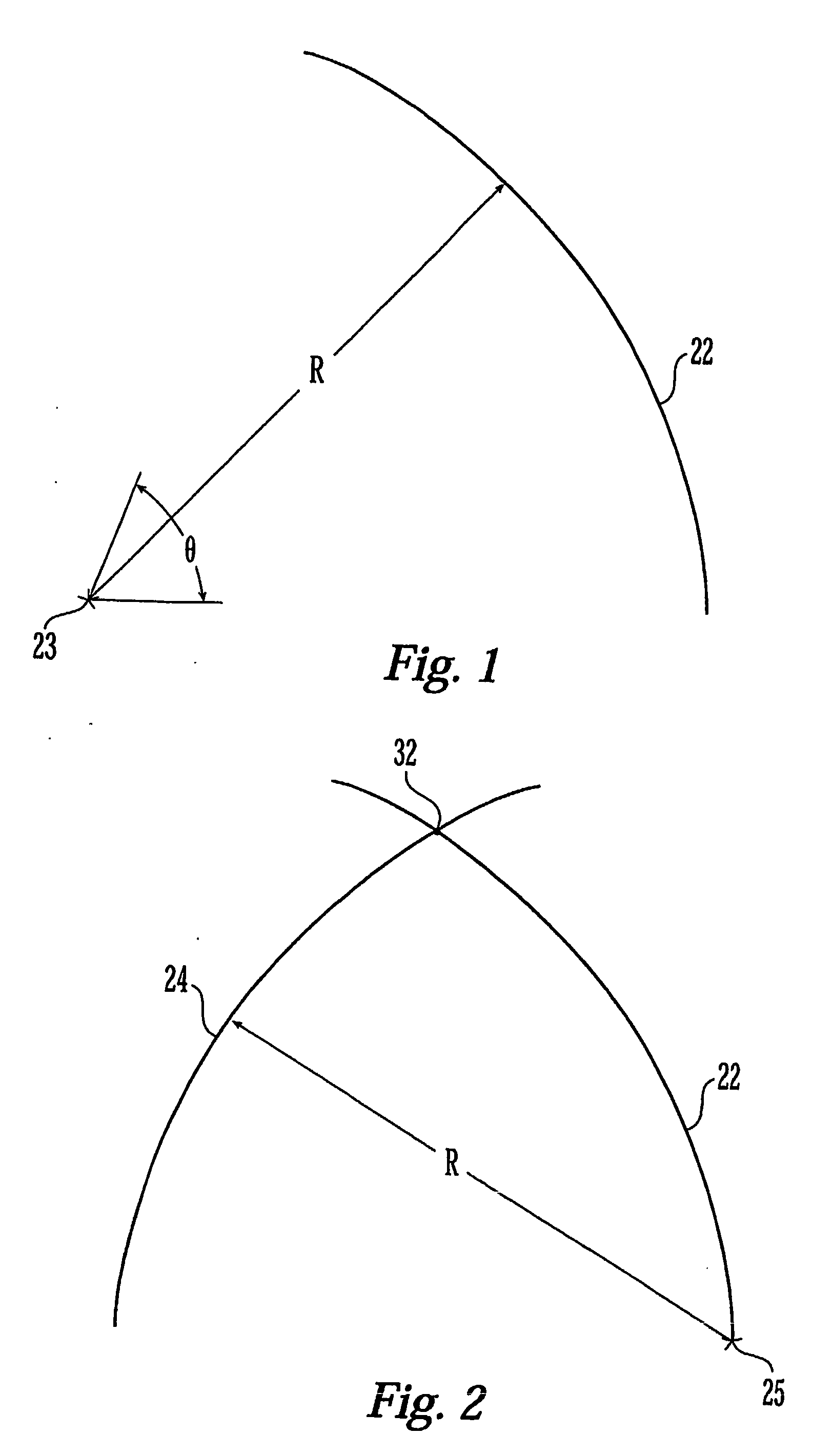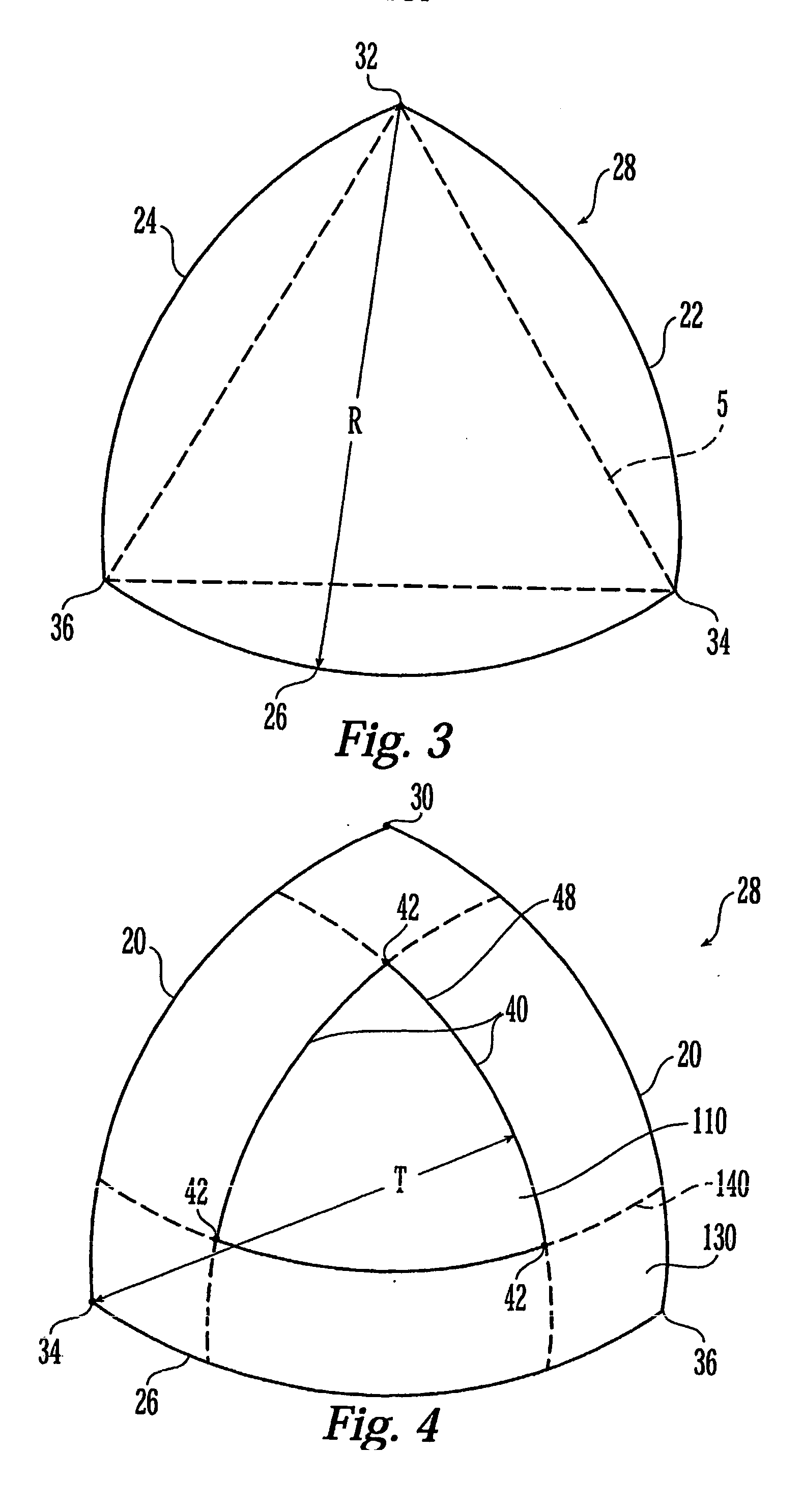Non-Euclidian Three-Dimensional Objects and Methods of Forming the Same
- Summary
- Abstract
- Description
- Claims
- Application Information
AI Technical Summary
Benefits of technology
Problems solved by technology
Method used
Image
Examples
Embodiment Construction
[0043] The present invention provides a method of preparing a template capable of forming a three-dimensional object from two-dimensional material in a manner which preferably provides a “folded” look to the object. It can be appreciated by one skilled in the art that the novel three-dimensional objects of the present invention can be formed from a variety of materials. Materials used to form the objects are preferably flexible at some temperature (i.e. room temperature or elevated), but capable of retaining a bend or fold. For example, the object may be formed from paper, cardboard, plastic, metal, wood, rubber, elastomers, ceramics, or any other similar material capable of retaining a bend or fold. However, the material may be inflexible, but capable of being cut into various segments that may be joined and / or rejoined by suitable means known in the art.
[0044] As illustrated in FIG. 1, in a first embodiment, first outer arc 22, with a radius of curvature R, is inscribed. First ou...
PUM
 Login to View More
Login to View More Abstract
Description
Claims
Application Information
 Login to View More
Login to View More - R&D
- Intellectual Property
- Life Sciences
- Materials
- Tech Scout
- Unparalleled Data Quality
- Higher Quality Content
- 60% Fewer Hallucinations
Browse by: Latest US Patents, China's latest patents, Technical Efficacy Thesaurus, Application Domain, Technology Topic, Popular Technical Reports.
© 2025 PatSnap. All rights reserved.Legal|Privacy policy|Modern Slavery Act Transparency Statement|Sitemap|About US| Contact US: help@patsnap.com



